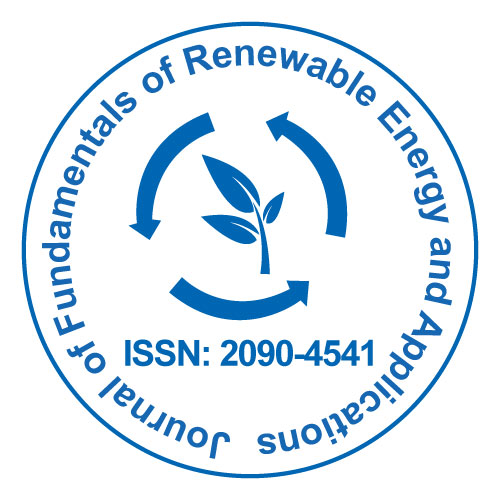
Journal of Fundamentals of Renewable Energy and Applications
Open Access
ISSN: 2090-4541

ISSN: 2090-4541
Ajay K Dalai, Sonil Nanda and Janusz A Kozinski
University of Saskatchewan, Canada
York University, Canada
Posters & Accepted Abstracts: J Fundam Renewable Energy App
Significant amount of fruit wastes and agro-food residues are generated worldwide as a result of food processing. Fruit residues contain numerous bioactive components, such as carbohydrates, lipids, fats, cellulose, hemicellulose and lignin that have tremendous potentials to be converted into biofuels. This study highlights the characterization and hydrothermal gasification of several fruit wastes and agro-food residues such as aloe vera rind, banana peel, coconut shell, lemon peel, orange peel, pineapple peel and sugarcane bagasse. The fruit wastes and agro-food wastes were gasified in supercritical water to study the impacts of temperature (400-600�°C), feed concentration (1:5 and 1:10 biomass-to-water ratio) and reaction time (15-45 min) at a pressure range of 23-25 MPa. The catalytic effects of NaOH and K2CO3 were also investigated to maximize the hydrogen yields and selectivity. The elevated temperature (600�°C), longer reaction time (45 min) and lower feed concentration (1:10 biomass-to-water ratio) were optimal for higher hydrogen (0.91 mmol/g) and total gas yields (5.5 mmol/g) from orange peel. However, coconut shell with 2 wt% K2CO3 at 600�°C and 1:10 biomass-to-water ratio for 45 min of gasification revealed superior hydrogen yield (4.8 mmol/g), hydrogen selectivity (46%) and total gas yields (15 mmol/g) with enhanced lower heating value of gas products (1595 kJ/Nm3). The overall findings imply that supercritical water gasification of fruit wastes and agro-food residues could serve as an effective organic waste management technology with regards to bioenergy production.
Email: ajay.dalai@usask.ca